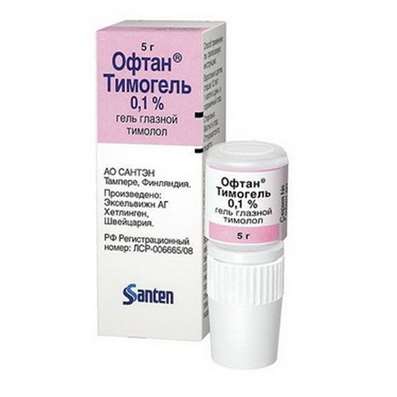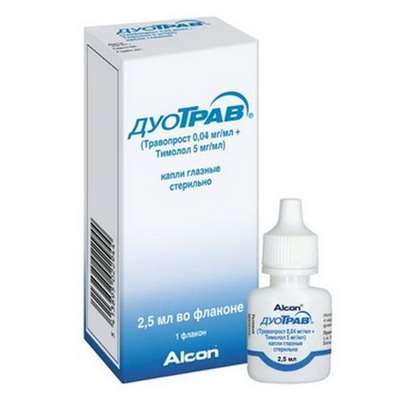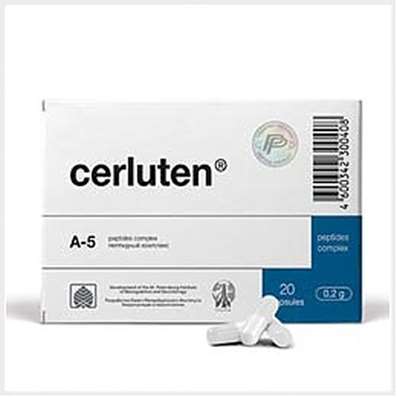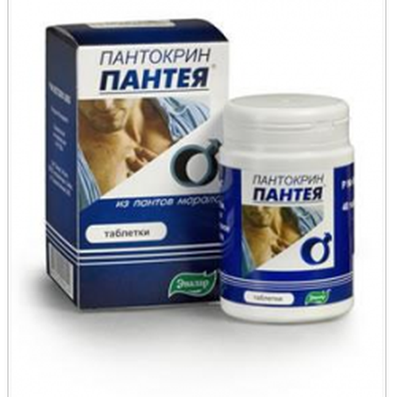Instruction for use: Carvedilol (Carvediloli)
I want this, give me price
Trade name of the drug – Carvedilol, Acridilole, Cardivas, Coriol, Kredex, Talliton
Chemical rational name: (±) -1- (9H-carbazol-4-yloxy) -3 - [[2- (2-methoxyphenoxy) ethyl] amino] propanol
Dosage Form: White crystal powder
Composition: Alpha- and beta-blocker. It is a racemic mixture of two enantiomers in which beta1- and beta2-blocking activity characteristic of S (-) - enantiomer, as alpha 1-blocking - R (+) and S (-) - enantiomers equally.
Description of Carvedilol
The crystal powder is white. Easily soluble in dimethyl sulfoxide, methylene chloride and soluble in methanol, difficult soluble in 95% ethanol and isopropanol, slightly soluble in ethyl ether and practically insoluble in water. The molecular weight of 406.5.
Pharmacotherapeutic group: Alpha- and beta-blockers
The nosological classification (ICD-10)
I10 Essential (primary) hypertension: hypertension; Arterial hypertension; Arterial hypertension crisis course; Essential Hypertension; Essential hypertension; Essential hypertension; Essential hypertension; Essential hypertension; Primary hypertension; Arterial hypertension, complications of diabetes; The sudden increase in blood pressure; Hypertensive disorders of blood circulation; hypertensive condition; hypertensive crises; arterial Hypertension; malignant Hypertension; Hypertonic disease; hypertensive crises; accelerated hypertension; malignant hypertension; The aggravation of hypertensive disease; Transient hypertension; Isolated systolic hypertension
I15 Secondary hypertension: Arterial hypertension, complications of diabetes; hypertension; The sudden increase in blood pressure; Hypertensive disorders of blood circulation; hypertensive condition; hypertensive crises; hypertension; arterial Hypertension; malignant Hypertension; hypertensive crises; accelerated hypertension; malignant hypertension; The aggravation of hypertensive disease; Transient hypertension; hypertension; Arterial hypertension; Arterial hypertension crisis course; renovascular hypertension; Hypertension symptomatic; Renal hypertension; Renovascular hypertension; renovascular hypertension; Symptomatic hypertension
I20 Angina [angina]: Heberden disease; Angina pectoris; The attack of angina pectoris; recurrent angina; Spontaneous angina; Stable angina pectoris; Angina rest; Angina progressing; Angina mixed; Angina spontaneous; stable angina; Chronic stable angina; Angina Syndrome X
I20.0 Unstable angina: heberden disease; Angina pectoris; The attack of angina pectoris; recurrent angina; Spontaneous angina; Stable angina pectoris; Angina rest; Angina progressing; Angina mixed; Angina spontaneous; stable angina; Chronic stable angina; Angina Syndrome X
I50.0 Congestive heart failure: anasarca heart; Decompensated congestive heart failure; Congestive heart failure; Congestive heart failure with high afterload; Congestive chronic heart failure; Cardiomyopathy with severe chronic heart failure; Compensated chronic heart failure; Swelling with circulatory failure; Edema of cardiac origin; Swelling of the heart; Edematous syndrome in diseases of the heart; Edematous syndrome in congestive heart failure; Edematous syndrome in heart failure; Edematous syndrome in heart failure or liver cirrhosis; right ventricular failure; Congestive Heart Failure; Heart failure stagnant; Heart failure with low cardiac output; Heart failure is a chronic; Cardiac edema; Chronic decompensated heart failure; Chronic Congestive Heart Failure; Chronic heart failure; Change of liver function in heart failure
Application of a substance Carvedilol:
Arterial hypertension, ischemic heart disease (stable angina), congestive heart failure (in combination therapy)
Pharmacology
Pharmachologic effect - Mode of action - antianginal, antihypertensive, antioxidant, vasodilatory.
Blocks beta- and alpha 1-adrenergic receptors. Blocking effect on beta-adrenergic receptors of 10-100 times more than in the alpha 1-adrenoceptors. Inhibits vasoconstrictive neurohumoral activation of the blood vessels and heart. It has a pronounced vasodilating effect, due to arteriolar vasodilation decreases afterload on the heart. It reduces plasma renin activity. It does not own sympathomimetic activity, it has membrane stabilizing properties. Inhibits proliferation and migration of smooth muscle cells, acting, apparently to specific mitogenic receptors. It does not have a pronounced effect on lipid metabolism and maintenance K +, Na + and Mg 2+ in the plasma.
When ingestion absorbed quickly and adequately. Cmax achieved through 1hr Bioavailability -. 25% (the effect of "first pass" through the liver). If abnormal liver function and a decrease in "first pass" effect, the bioavailability increases to 80%. Food intake has no effect on the bioavailability and increases Tmax. Older people approximately 50% higher plasma concentrations than younger patients. Associated with the plasma protein by 99%. The volume of distribution - 2 L / kg. Carvedilol is extensively metabolized in the liver, primarily by aromatic ring oxidation and glucuronidation involving cytochrome P450 isoenzyme CYP2D6. Other isoenzymes - CYP2C9 and CYP3A4 - involved in the metabolism of a lesser degree. By demethylation and hydroxylation of the phenyl ring formed three active metabolites with beta-adrenoceptor blocking action, as well as the weak vasodilating activity (alpha 1 antagonist) compared to carvedilol. Preclinical studies have shown that beta-adrenoceptor blocking effect of the 4'-hydroxyphenyl metabolite is approximately 13 times more potent than carvedilol. Terminal T1 / 2 is 7-10 hours, plasma clearance -. About 590 ml / min. Excreted mainly in the bile, less than 2% is excreted in the urine in unchanged form.
When hypertension blood pressure reduction is not accompanied by a characteristic beta-blockers increase in systemic vascular resistance and changes in renal blood flow. Long antianginal effect in ischemic heart disease associated with a reduced pre- and afterload. It helps restore contractile function of the myocardium and improve blood evacuation of the left ventricular cavity, a reduction in systolic and end-diastolic left ventricular size. Patients with systolic form of congestive heart failure increases exercise tolerance, reduces heart rate, systemic vascular resistance, improves left ventricular ejection fraction, cardiac index, reduces the pulmonary capillary wedge pressure.
As a result of four multi-center, double-blind, placebo-controlled trials (n = 1094) for the study of carvedilol in patients with heart failure II and III class NYHA * (* NYHA-II: patients in this stage alone no symptoms, moderate exercise is accompanied by fatigue, palpitations and shortness of breath (short breath); * NYHA-III: symptoms usually not alone a small physical exertion causes symptoms as mentioned above) and ejection fraction <0.35 (the majority of patients had received treatment before the base consisting of inhibitors ACE, diuretics and digoxin) carvedilol reduced the risk of death of patients (65%) and the rate of hospitalization (38%). The Australia-New Zealand double-blind, placebo-controlled study (n = 415) in patients with less severe heart failure, carvedilol reduced the risk of death by 28%. Efficiency was more pronounced in patients with tachycardia (heart rate> 82 bpm. / Min) and low ejection fraction (> 23%). The therapeutic effect is manifested in ischemic etiology of chronic heart failure in patients with dilated cardiomyopathy. In appointing patients with left ventricular dysfunction after myocardial infarction observed reduction in mortality regardless of cause. It has an antioxidant effect due to inhibition of the formation of oxygen free radicals, a number of favorable metabolic effects: reduces the level of triglycerides, cholesterol, low density lipoprotein and increases high-density lipoprotein.
When administered for two years in rats and mice at a dose of 75 mg / kg / day (12 times the MRDC) and 200 mg / kg / day (16 times the MRDC) respectively were found not evidence of carcinogenicity. In conducting various tests for mutagenicity (including the Ames test, micronucleus test in vitro on cells of Chinese hamster, in vivo test on human lymphocytes) produced a negative result.
In the study on rats and rabbits showed an increase in post-implantation losses when used in the rats in doses of 300 mg / kg / day (50 times the MRDC) and in rabbits at doses of 75 mg / kg / day (25 times the MRDC); in rats at doses of these fruits also showed a decrease in body weight and an increase in the frequency of skeletal malformations. It is shown that carvedilol and / or its metabolites into breast milk newborn rats and increased mortality of young rats.
Contraindications for Carvedilol
Hypersensitivity, hypotension (Sad less than 85 mm Hg..), Decompensated heart failure (IV NYHA functional class), which requires the appointment of inotropes, vasodilators, diuretics); bradycardia, AV block II-III degree sinoatrial block, sick sinus syndrome, cardiogenic shock, chronic obstructive pulmonary disease with a bronchospastic component of asthma (reported two fatalities due to the development of asthma status after a single dose of carvedilol), severe liver.
Restrictions to application
Prinzmetal angina, recent worsening of heart failure, peripheral vascular disease (Raynaud's syndrome, intermittent claudication), diabetes, hypoglycemia, pheochromocytoma, hyperthyroidism, holding general anesthesia, psoriasis, renal impairment, advanced age, Children and Youth age (up to 18 years ).
Carvedilol Dosage and Administration
Inside
Pregnancy and breast-feeding
In pregnancy is possible if the expected effect of therapy outweighs the potential risk to the fetus (adequate and well-controlled studies in humans have not done).
Category effects on the fetus by FDA - C.
At the time of treatment should abandon breastfeeding (known whether carvedilol passes into breast milk in humans).
Side effect of Carvedilol
From the nervous system and sensory organs: dizziness, headache, fatigue, syncope (rare and usually only at the beginning of treatment), muscle weakness (most often at the beginning of treatment), sleep disturbances, depression, paresthesia, xerophthalmia, lowering slezovydeleniya .
Cardio-vascular system and blood (blood, hemostasis): bradycardia, disturbance of AV conduction postural hypotension, chest pain, angina pectoris, worsening of peripheral circulation, the progression of heart failure, exacerbation of the symptoms of Raynaud's syndrome, edema syndrome, thrombocytopenia, leukopenia, elevated bleeding and bruising.
From the digestive tract: dry mouth, nausea, vomiting, abdominal pain, diarrhea, obstipation, increased transaminase levels in the blood.
From the respiratory system: nasal congestion, sneezing, shortness of breath (in predisposed patients), bronchospastic reactions.
With the genitourinary system: a violation of urination, hematuria, acute renal failure.
Allergic reactions: skin rash, including allergic rash, urticaria, pruritus.
Other: swelling and pain in the extremities, weight gain, hyperglycemia, hyperbilirubinemia, hypercholesterolemia, flu-like symptoms, exacerbation of psoriasis symptoms.
Overdose of Carvedilol
Symptoms: severe hypotension (Sad 80 mm Hg or less..), Bradycardia (less than 50 beats / min.), Heart failure, cardiogenic shock, cardiac arrest, violation of the respiratory function, bronchospasm, vomiting, confusion, generalized convulsions.
Treatment: while the patient is conscious, you must give it a horizontal position with raised legs (the patient is unconscious should be laid on its side), in the first few hours - to take steps to remove the drug from the gastrointestinal tract (reception emetics / gastric lavage). Overdose requires intensive treatment. Antagonist beta-adrenoceptor blocking action orciprenaline or isoprenaline is 0.5-1 mg / in and / or glucagon in a dose of 5.1 mg (maximum dose - 10 mg). With the development of bradycardia and other vascular complications must atropine (at 0.5-2 mg / w), with treatment-resistant shown bradycardia pacemaker application; to maintain cardiovascular activity - dobutamine, epinephrine, glucagon (1-10 mg / bolus, then 5.2 mg / hour by infusion); with bronchospasm - beta-sympathomimetics aerosol (at inefficiency - in / in) or aminophylline (w / w); in the case of convulsions - diazepam, clonazepam. The control and correction of vital signs is recommended in the intensive care unit.
Interaction
Potentiates the effect of other drugs, or antihypertensive drugs, hypotensive effect as a side effect. Drugs with a beta-adrenoceptor blocking properties may may enhance hypoglycemic effect of insulin and oral hypoglycemic drugs, and the symptoms of hypoglycaemia (especially tachycardia) may be masked (recommended regular monitoring of blood glucose). When used in conjunction with cardiac glycosides, diuretics and / or ACE inhibitors may slow AV conduction. Increases of digoxin in serum. General anesthetics (cyclopropane, diethyl ether, trichlorethylene) reinforce the negative inotropic and hypotensive effects of carvedilol. Phenobarbital, rifampin and other agents that inhibit microsomal enzymes accelerate metabolism and reduce plasma concentration. Diuretics and ACE inhibitors potentiate hypotension. Caution should be used with anti-arrhythmic drugs and CCB, especially diltiazem and verapamil (incompatible with / in the introduction of calcium antagonists).
SPECIAL INSTRUCTIONS for Carvedilol
Carvedilol interaction with cyclosporine
Carvedilol can cause an increase (small to medium) level in the serum cyclosporine.
Clinical evidence, mechanism, importance and caution
In a study of 21 patients with renal transplants shown that the gradual replacement of atenolol to carvedilol (doses ranging from 6.25 mg / day, increasing to 50 mg / day) dose of cyclosporine can be gradually reduced. After 90 days the daily dose of cyclosporine was reduced by 20% (from 3.7 to 3 mg / kg body weight), while maintaining a therapeutic level in the range, but with high intraindividual variation. The reason for this interaction is not clear, but the appointment of carvedilol should be ready for such interaction.
Precautions for use Carvedilol
During therapy monitoring of liver and kidney functions, hemodynamic parameters, control of blood glucose concentration, patient body weight. With the development of bradycardia to 55 beats per minute drug should be discontinued. In patients with circulatory failure, hypotension (.. Sad less than 100 mm Hg), diffuse vascular changes and / or renal failure need to monitor renal function and its deterioration - to reduce the dose or stop the drug.
Caution should be used in elderly people (appointed half dose), at the recent worsening of heart failure. In all cases, treatment is initiated with low doses followed by a slow increase to their effective. With the progression of heart failure during treatment is recommended to increase the dose of diuretics, and in patients with renal failure the dose adjusted according to renal function. To prevent the syndrome of cancellation of the dose should be reduced gradually. People with severe allergies or a passing rate of desensitization, may increase the severity of hypersensitivity reactions. In patients with diabetes mellitus and hyperthyroidism may mask or reduce the symptoms caused by hypoglycemia (if necessary adjust the dose of hypoglycemic agents) or thyrotoxicosis. When pheochromocytoma should simultaneously apply alpha adrenolytics. People who use contact lenses, you must take into account the ability to reduce tearing.
If you cancel a combination therapy with clonidine must be gradually phased out carvedilol for a few days before the start of a gradual reduction of the dose of clonidine. In the combination therapy of heart failure in the case of pronounced lowering of blood pressure is recommended to initially reduce the dose of diuretics or ACE inhibitors. During treatment excludes alcohol. Be wary appoint patients, whose work is connected with the necessity of attention and speed of reaction.

 Cart
Cart





